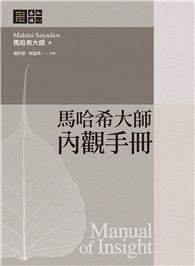There are, in simple terms, three principal kinds of capital that come necessarily into play when a society is evolving towards improving the lives, livelihoods, and qualities of life of its people. The first form of capital is financial - this normally includes physical forms of invested money in plant, buildings, and infrastructure. The second form of capital is human - seen simply as the level and range of skills and capabilities that are available for use in the society. When people are literate, numerate, skilled, experienced, informed, cooperative, and inquisitive, they and their societies can do much more. The third form of capital is social. Here cooperativeness shows its effects, and the rules of how that works vary greatly between societies. It is the second of these elements, human capital, that is the main focus of this book, but it overlaps with social capital extensively in these accounts and can only be understood in terms of its connections into the wider societal system. The varying patterns of its workings and influence in different Asian contexts are explained against the background of a theory of societal progress. This book was originally published as a special issue of the Asia Pacific Business Review.
| FindBook |
有 1 項符合
Social Aspects of Asian Economic Growth: Human Capital and the People Side of Progress的圖書 |
 |
Social Aspects of Asian Economic Growth: Human Capital and the People Side of Progress 出版社:Routledge 出版日期:2019-12-17 語言:英文 規格:平裝 / 150頁 / 普通級/ 初版 |
| 圖書館借閱 |
| 國家圖書館 | 全國圖書書目資訊網 | 國立公共資訊圖書館 | 電子書服務平台 | MetaCat 跨館整合查詢 |
| 臺北市立圖書館 | 新北市立圖書館 | 基隆市公共圖書館 | 桃園市立圖書館 | 新竹縣公共圖書館 |
| 苗栗縣立圖書館 | 臺中市立圖書館 | 彰化縣公共圖書館 | 南投縣文化局 | 雲林縣公共圖書館 |
| 嘉義縣圖書館 | 臺南市立圖書館 | 高雄市立圖書館 | 屏東縣公共圖書館 | 宜蘭縣公共圖書館 |
| 花蓮縣文化局 | 臺東縣文化處 |
|
|
作者簡介
Gordon Redding is a specialist in comparative management, who has spent 28 years in Asia studying its management systems, teaching, and writing, based both at the University of Hong Kong, and at INSEAD. He is the author of The Spirit of Chinese Capitalism (1990), co-author of The Future of Chinese Capitalism (with Michael Witt, 2007), and co-editor of The Oxford Handbook of Asian Business Systems (with Michael Witt, 2014).
Chris Rowley is a Visiting Fellow at Kellogg College, University of Oxford, and Professor Emeritus in the Cass Business School, City, University of London, UK. He has published widely, with over 600 articles, books, chapters and pieces in the areas of human resource management and Asian business. He also edits four journals and three book series, as well as regularly providing expert comments and quotes in the media.
|










